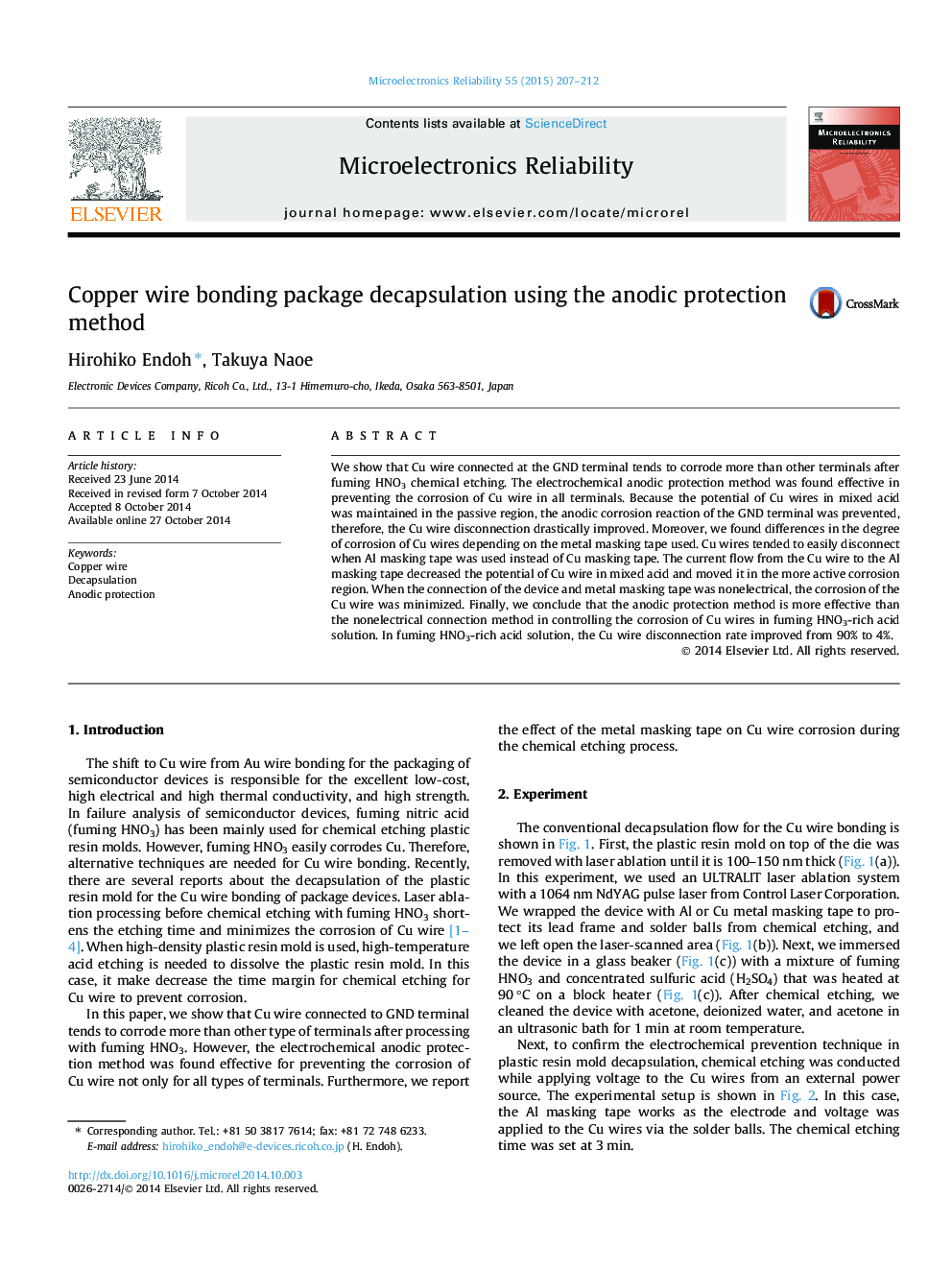| Article ID | Journal | Published Year | Pages | File Type |
|---|---|---|---|---|
| 10364727 | Microelectronics Reliability | 2015 | 6 Pages |
Abstract
We show that Cu wire connected at the GND terminal tends to corrode more than other terminals after fuming HNO3 chemical etching. The electrochemical anodic protection method was found effective in preventing the corrosion of Cu wire in all terminals. Because the potential of Cu wires in mixed acid was maintained in the passive region, the anodic corrosion reaction of the GND terminal was prevented, therefore, the Cu wire disconnection drastically improved. Moreover, we found differences in the degree of corrosion of Cu wires depending on the metal masking tape used. Cu wires tended to easily disconnect when Al masking tape was used instead of Cu masking tape. The current flow from the Cu wire to the Al masking tape decreased the potential of Cu wire in mixed acid and moved it in the more active corrosion region. When the connection of the device and metal masking tape was nonelectrical, the corrosion of the Cu wire was minimized. Finally, we conclude that the anodic protection method is more effective than the nonelectrical connection method in controlling the corrosion of Cu wires in fuming HNO3-rich acid solution. In fuming HNO3-rich acid solution, the Cu wire disconnection rate improved from 90% to 4%.
Keywords
Related Topics
Physical Sciences and Engineering
Computer Science
Hardware and Architecture
Authors
Hirohiko Endoh, Takuya Naoe,
